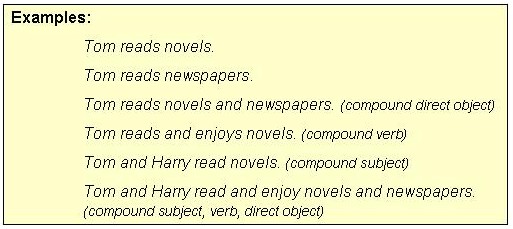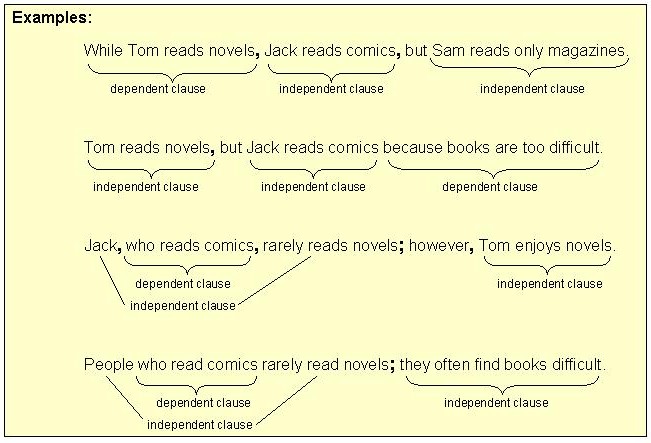Kinds of Sentences
A sentence may be one of four kinds, depending upon the number and type(s) of clauses it contains.
Review:
An independent clause contains a subject, a verb, and a complete thought.

A dependent clause contains a subject and a verb, but no complete thought.

1. A SIMPLE SENTENCE has one independent clause.

Punctuation note: NO commas separate two compound elements (subject, verb, direct object, indirect object, subjective complement, etc.) in a simple sentence.
2. A COMPOUND SENTENCE has two independent clauses joined by
A. a coordinating conjunction (for, and, nor, but, or, yet, so),
B. a conjunctive adverb (e.g. however, therefore), or
C. a semicolon alone.

Punctuation patterns (to match A, B, and C above):
A. Independent clause, coordinating conjunction independent clause.
B. Independent clause; conjunctive adverb, independent clause.
C. Independent clause; independent clause.
3. A COMPLEX SENTENCE has one dependent clause (headed by a subordinating conjunction or a relative pronoun ) joined to an independent clause.

Punctuation patterns (to match A, B, C and D above):
A. Dependent clause, independent clause
B. Independent clause dependent clause
C. Independent, nonessential dependent clause, clause.
D. Independent essential dependent clause clause.
4. A COMPOUND-COMPLEX SENTENCE has two independent clauses joined to one or more dependent clauses.





